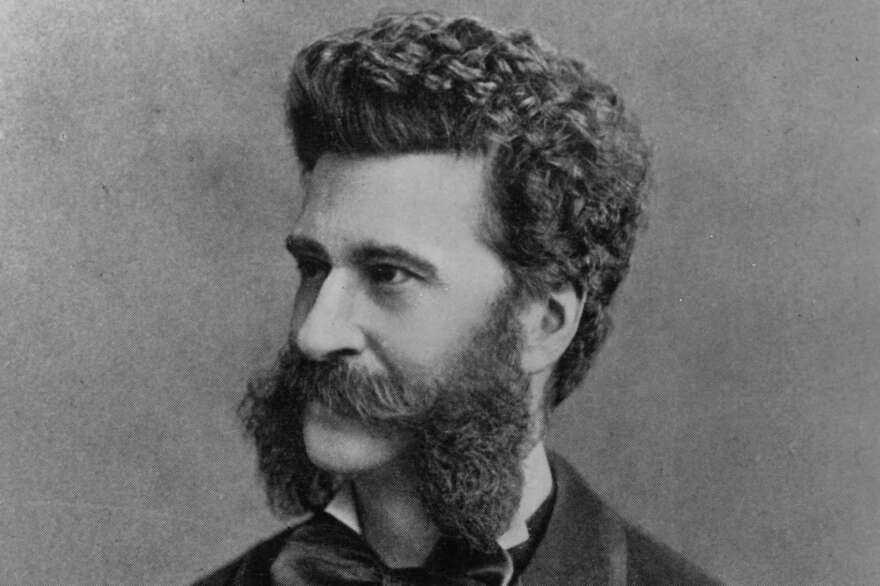Johann Strauss II, known as “The Waltz King,” helped popularize the waltz and other social dances in 19th-century Europe.
Here & Now‘s Robin Young talks with classical music columnist Fran Hoepfner (@franhoepfner) for her colorful take on the Austrian composer’s works.
“There’s so much playful drama to it, which I really enjoy as a listener,” Hoepfner says.
Interview Highlights
On what stands out about Strauss’ music
“What’s important to me about Strauss is that his music is really fun, and I think it’s important to also share music that is bright and colorful and fun.”
“Music trains you to listen to it, so you know that something is coming from the way it sort of just crescendos very slowly — but you don’t know what. And I think that anticipation, that middle ground that he provides, is so much fun as a listener.”
“I think having this type of music that liberated people from their homes and encouraged them to have a good time, it could only be good for the emotional well-being of Europeans and beyond, and it’s kind of how we talk about pop music now when we feel like it’s pushing boundaries.”
On his 1874 composition “Die Fledermaus”
“It’s lovely. It’s so buoyant and exciting, and I love the way that he plays with the weight of the timing of it, so you always get a little comfortable and then he sort of drags on a little bit.”
On what it’s like to perform Strauss as a musician
“It’s an absolute blast. And as a percussionist, waltzes are so fun because they are so rhythmic — there’s such an emphasis on the timpani, on the cymbals, on the triangle. It’s just a joy. I mean a lot of percussion parts for classical music are sometimes hurry up and wait — you get one big note and then you sit there for 10 minutes. And that’s never the case for the waltz. You’re always playing.”
Copyright 2021 NPR. To see more, visit https://www.npr.org.



